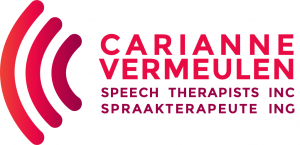What Is Language? What Is Speech?
Margaret’s 4-year-old daughter, Samantha, has speech and language problems. Friends and family have a difficult time understanding what she is saying. She speaks softly, and her sounds are not clear.
Kevin is a 5-year-old boy. He only speaks in one- to two-word sentences and cannot explain what he needs and wants. He also has trouble following simple directions.
Language is different from speech.
Language is made up of socially shared rules that include the following:
- What words mean (e.g., “star” can refer to a bright object in the night sky or a celebrity)
- How to make new words (e.g., friend, friendly, unfriendly)
- How to put words together (e.g., “Lucy walked to the new house.” rather than “Lucy walk house new.”)
- What word combinations are best in what situations (“Would you mind moving your foot?” could quickly change to “Get off my foot, please!” if the first request did not produce results)
Speech is the verbal means of communicating. Speech consists of the following:
Articulation
How speech sounds are made (for example children must learn how to produce the “r” sound in order to say “rabbit” instead of “wabbit“).
Voice
Correct use of the vocal folds and breathing to produce sound (the voice can be abused from overuse or misuse and can lead to hoarseness or loss of voice).
Fluency
Fluency refers to the effortless and rhythmic flow of speech. Repetitions of a sound or prolongation of certain sounds interjections and the blocking of airflow can affect fluency).
When a person has trouble understanding others (receptive language), or sharing thoughts, ideas, and feelings completely (expressive language), then he or she has a language disorder.
When a person is unable to produce speech sounds correctly or fluently, or has problems with his or her voice, then he or she has a speech disorder.
In our example, Samantha has a speech disorder that makes her hard to understand. If her lips, tongue, and mouth are not moved at the right time, then what she says will not sound right. Children who stutter, and people whose voices sound hoarse or nasal have speech problems as well.
Kevin has a receptive and expressive language disorder. He does not have a good understanding of the meaning of words and how and when to use them. Because of this, he has trouble following directions and speaking in long sentences. Many others, including adults with aphasia and children with learning disabilities, have language problems.
Language and speech disorders can exist together or by themselves. The problem can be mild or severe. In any case, a comprehensive evaluation by a speech-language therapist is the first step to improving speech and language problems.

